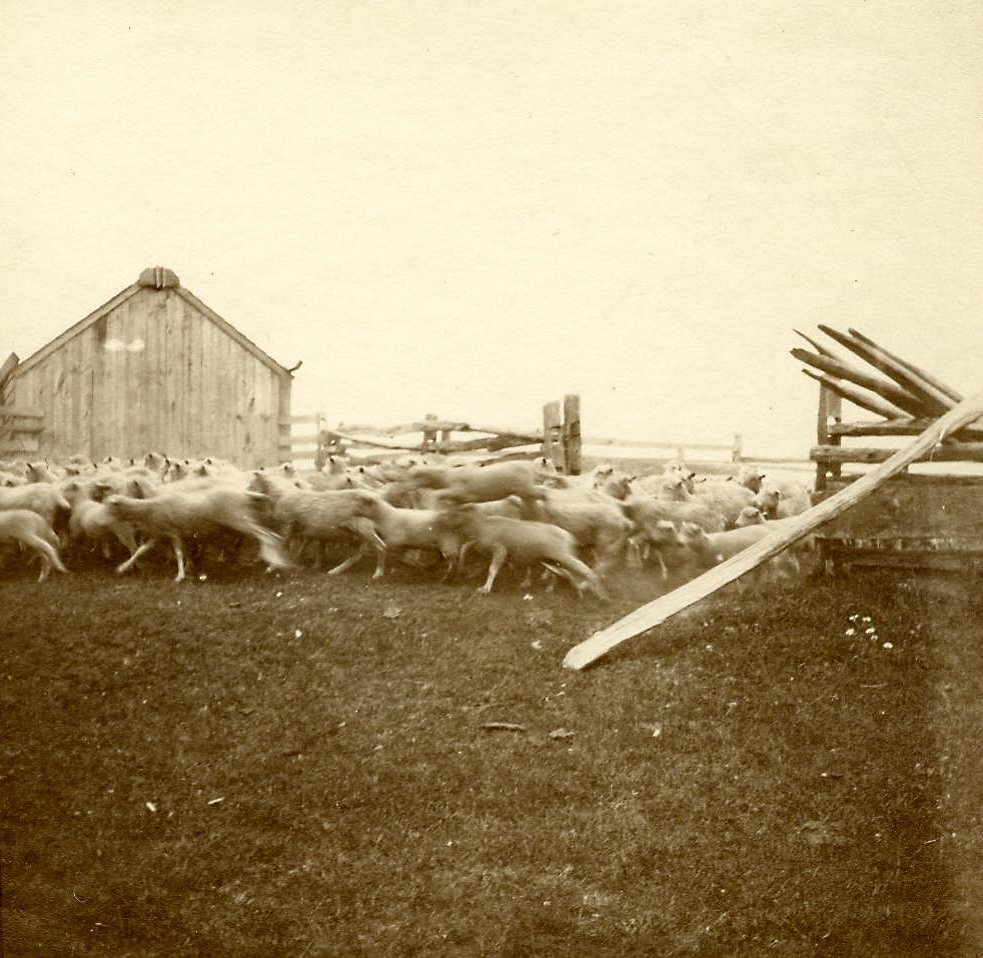
Photograph of sheep at Second House, John Van Siclen collection, donated by James Schwartz.
For more than two centuries, sheep and cattle were driven to and from Montauk during the months of March and December. The keepers who tended the livestock in Montauk lived in three houses, two of which still exist today, Second House and Third House. The sheep and cattle were owned by the proprietors of East Hampton, who had originally bought the land for pasturing from the Montaukett Indians in the mid-1600s. Keepers’ responsibilities included recording the livestock entering and exiting the fenced-off grazing areas, fixing those fences, and riding out into the herds 2 1/2 days a week to make sure the animals were safe. Each keeper had his own special duties, which perpetuated the rhythmic flow of daily agrarian life in Montauk.
Second House keepers were in charge of managing the sheep, which were shepherded back to East Hampton in June to be washed and shorn, and then returned again to Montauk to graze. At season’s end the sheep were driven back to East Hampton before the first big snow, always in late November or early December. Keepers were encouraged to pasture their own sheep, as well, and to keep poultry and grow crops. This was done not only for their own well-being, but also to feed those workers who came to Montauk to assist with the herding of the livestock, to repair fences, and build the Association Houses.
Second House had a bucolic charm. Known for delicious meals and cozy hospitality, its keepers provided visitors with a warm, homespun lodging experience. Sheep grazing on the hills was part of the pastoral setting. Robert Hefner, in his Second House Historic Structure Report prepared for the Town Board of East Hampton, cites an 1883 (July 21st) article from the Southside Signal, a Babylon, N.Y., publication, that includes this description of the sheep around Second House: “This part of the peninsula is devoted to sheep grazing, and twenty-two hundred of the innocents are about you as you walk, disposed in pretty groups on the hillside, standing in bas-relief on their summits, or scampering away in confused masses at your approach. Sheep and nothing else have grazed here for more than two hundred years…”
The sheep are now gone, but it is a credit to the ardent supporters of Montauk history that Second House remains. The structure is currently undergoing an important restoration based on Hefner’s report. (This report is directly available from the Montauk Historical Society website: https://www.montaukhistoricalsociety.org/wp-content/uploads/2016/03/TheSecondHouseReport2016.pdf.) It’s hard to miss the newly spiffed-up exterior of the “little brown farmhouse” on the corner of Second House Road after descending the hill from Montauk State Parkway and continuing east. The current “keeper” of Second House, the Montauk Historical Society, has moved forward with a plan to ensure that even the sheep who used to live at this important location would be happy to call the “new and improved” Second House their home.

Reply or Comment